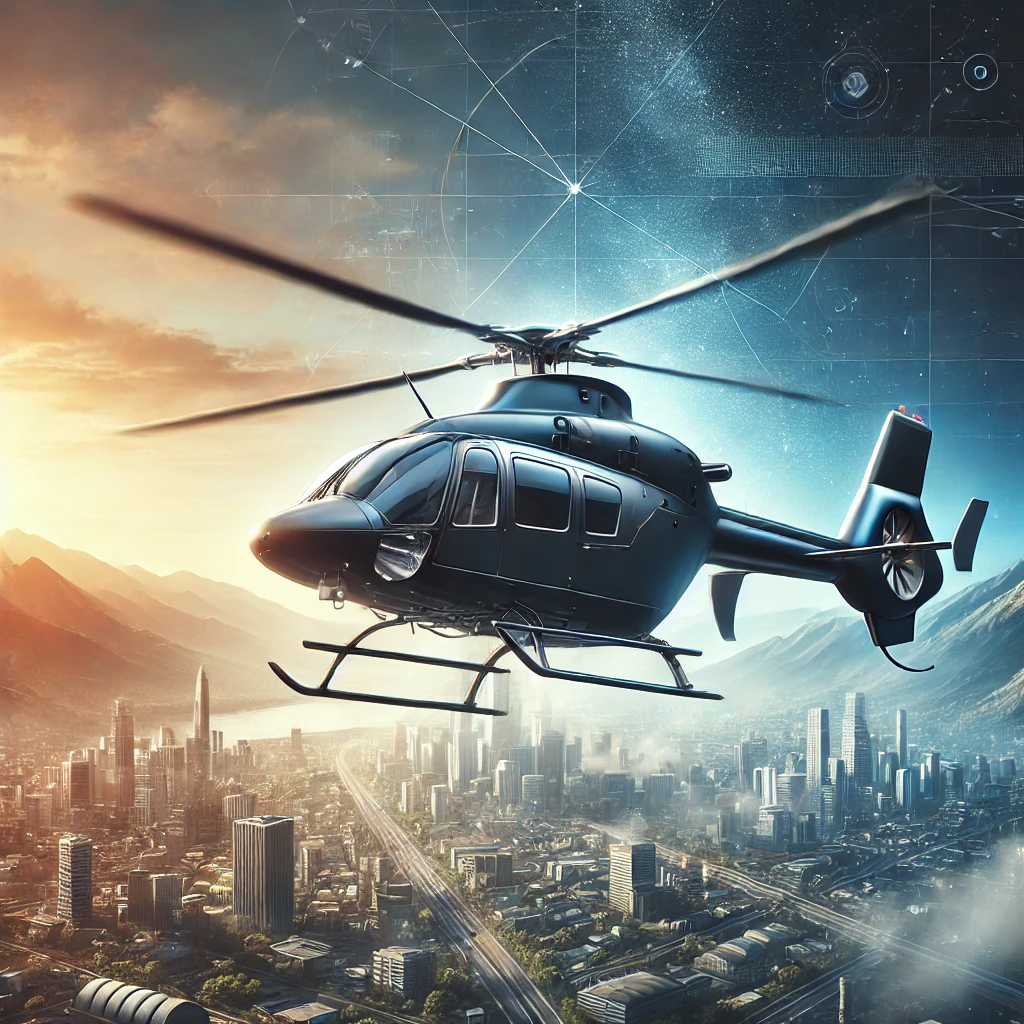Helicopters are marvels of engineering, offering unparalleled versatility in rescue missions, medical emergencies, military operations, and even leisure travel. However, despite their proven capabilities, misconceptions about the safety of helicopters persist. In this article, we’ll explore the safety of helicopters and debunk some of the most common misconceptions surrounding them.
1. Misconception: Helicopters Are More Dangerous Than Airplanes
One of the most widespread beliefs is that helicopters are inherently more dangerous than airplanes. While airplanes are more common and familiar to the public, helicopters are often seen as risky due to their ability to hover and land in tight spaces.
Reality:
Helicopters are not more dangerous than airplanes. Both types of aircraft are subject to strict safety regulations and standards. Helicopters are designed with advanced technology that allows for safe operation in various environments, and modern helicopters come equipped with redundant systems to manage emergencies. In fact, helicopters have the ability to land in much smaller areas than airplanes, which can make them safer in emergency situations as they don’t need large runways.
2. Misconception: If a Helicopter Engine Fails, It Will Fall Out of the Sky
Many people believe that if a helicopter engine fails, it will instantly plummet to the ground. This misconception can cause unwarranted fear and hesitation around flying in helicopters.
Reality:
Helicopters are designed to handle engine failures with a process called autorotation. In the event of engine failure, the helicopter’s rotor blades continue to spin using the airflow generated by the descent. This allows the pilot to guide the helicopter to a safe landing. Pilots are trained to execute autorotation in emergencies, ensuring that the aircraft can descend and land smoothly.
3. Misconception: Helicopters Can’t Fly in Bad Weather
Another common misconception is that helicopters are too fragile to handle adverse weather conditions like rain, fog, or high winds. Many believe that helicopters are grounded during any kind of inclement weather, making them unreliable.
Reality:
While extreme weather can pose challenges for any aircraft, modern helicopters are equipped with advanced avionics that allow them to fly safely in many weather conditions. GPS navigation, weather radar, and terrain awareness systems help pilots navigate during low visibility or storms. However, like all aircraft, helicopter pilots assess weather conditions carefully and may delay flights if conditions are deemed unsafe.
4. Misconception: Helicopters Don’t Undergo Rigorous Maintenance
There’s a myth that helicopters don’t receive the same level of care and maintenance that airplanes do, leading some to believe they are unsafe to fly. This misconception often stems from a lack of understanding about helicopter operations.
Reality:
Helicopters are held to the same rigorous maintenance standards as airplanes. Maintenance crews regularly inspect and service helicopters to ensure they are in optimal condition before every flight. Helicopters undergo pre-flight checks, routine inspections, and are required to follow strict guidelines set by aviation authorities to prevent mechanical failures. Any issues that arise are addressed immediately before the aircraft can return to service.
5. Misconception: Helicopters Are Prone to Crashing More Often Than Airplanes
Many believe that helicopters crash more frequently than airplanes, especially since they are often used in risky operations like search and rescue or medical evacuations.
Reality:
While helicopters are sometimes used in dangerous or high-risk situations, such as in disaster zones or remote rescues, this doesn’t make them inherently prone to crashing. Many helicopter crashes are related to environmental factors or pilot error, not the aircraft itself. Like airplanes, helicopters are equipped with multiple safety systems and undergo regular training and inspections to ensure safe operation. When flown by experienced pilots, helicopters have a strong safety record.
6. Misconception: Helicopters Can’t Glide in an Emergency
Some people assume that unlike airplanes, helicopters can’t glide or control their descent in an emergency, making them more dangerous in the event of a malfunction.
Reality:
Helicopters can safely descend using autorotation, as mentioned earlier. This allows them to maintain control and land safely even if the engine fails. Pilots are trained extensively in emergency procedures, including autorotation, to ensure they can handle any situation. In many cases, the ability of a helicopter to land in confined spaces gives it more options for safe landings than an airplane might have.
7. Misconception: Helicopters Are Only for High-Risk Situations
Some people associate helicopters exclusively with risky situations, such as combat, mountain rescues, or flying through dangerous environments, leading to the perception that helicopters are inherently more dangerous.
Reality:
While helicopters are indeed used in high-stakes operations, they are also used for many everyday tasks, including tourism, transportation, news reporting, and corporate travel. In these roles, helicopters operate in controlled, low-risk environments with the same high level of safety precautions as airplanes. Their ability to hover and land in small spaces makes them incredibly versatile and safe for a variety of applications.
8. Misconception: Helicopters Don’t Have Redundant Safety Systems Like Airplanes
Some people believe that airplanes have more redundant safety systems, making them safer than helicopters. They assume that helicopters lack backup systems to handle mechanical failures or other emergencies.
Reality:
Modern helicopters are designed with multiple redundant systems to ensure safety in the event of a failure. For example, many helicopters are equipped with dual-engine systems, meaning that if one engine fails, the other can continue operating. Additionally, helicopters are fitted with backup electrical, hydraulic, and control systems to ensure continuous safe operation. These redundancies significantly reduce the risk of catastrophic failure.
9. Misconception: Helicopter Pilots Have Less Training Than Airplane Pilots
There is a belief that because helicopters are smaller and more agile than airplanes, helicopter pilots don’t need as much training or experience to operate safely.
Reality:
Helicopter pilots undergo extensive training, often comparable to airplane pilots. In addition to learning the technical aspects of flying, helicopter pilots are trained to handle emergencies, navigate in poor visibility, and execute precision landings. Pilots must also pass rigorous exams and obtain licenses that meet the standards set by aviation authorities, ensuring they are well-prepared for any situation.
10. Misconception: Helicopters Can’t Fly at Night
Some people believe that helicopters can’t operate at night due to limited visibility or increased risk of accidents.
Reality:
Many helicopters are equipped with night vision technology, GPS, and instrument flight systems, allowing them to fly safely at night. In fact, air medical services and military operations often rely on helicopters for nighttime missions. Helicopter pilots are trained to operate in low-light environments and use advanced tools to maintain safety during night flights.
Conclusion
Helicopters are safe, versatile aircraft with a wide range of applications. Many of the common misconceptions surrounding helicopter safety stem from misunderstandings about how these aircraft function and the rigorous safety measures in place. By debunking these myths, we can appreciate the unique capabilities of helicopters and the critical role they play in everything from medical evacuations to tourism. When flown by trained pilots and maintained to high standards, helicopters are a safe and reliable mode of transportation.
Related Articles
- Can Anyone Learn to Fly a Helicopter? Understanding Training and Skills Required
- Why Do Helicopters Make That Distinctive Sound? Helicopter Noise Explained
- Do Helicopters Require More Maintenance Than Airplanes? Separating Fact from Fiction
- How Far Can Helicopters Travel? Dispelling Range Myths
- What Happens if a Helicopter Engine Fails? Debunking Catastrophe Myths
More from This Category
- Are Helicopters More Dangerous Than Planes? A Safety Comparison
- Do Helicopters Have Parachutes? Exploring Emergency Systems
- Can Helicopters Fly Upside Down? The Truth Behind Aerobatic Stunts
- Do Helicopters Need a Runway? Myth vs. Reality
- How Much Does It Really Cost to Fly a Helicopter? Busting the Myths
- How High Can Helicopters Fly? Debunking Altitude Myths
- Can Helicopters Fly in Bad Weather? Understanding Helicopter Capabilities
- Do Helicopters Really Hover Forever? Separating Fact from Fiction
- How Safe Are Helicopters? Debunking Common Misconceptions
- Top 10 Myths About Helicopter Safety: What You Need to Know



